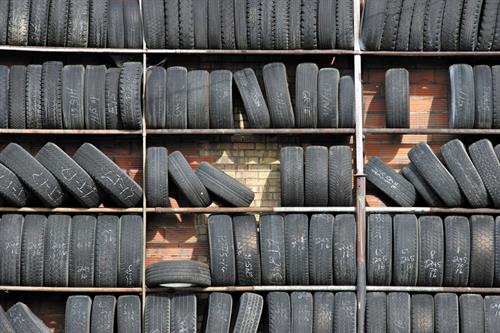While the closure of manufacturing facilities across China due to Coronavirus may reduce the supply of low-cost tyres to Britain, TyreSafe is advising motorists to think twice before turning to part worns as an alternative.
Low-cost new tyres have become a popular choice in the UK for drivers on a budget and sales run into the millions each year. The vast majority of these are imported into the country from China and across South East Asia where the outbreak of Coronavirus (COVID-19) has led to governments closing facilities such as schools and factories to limit the spread. As a consequence, the level of supply the UK has become accustomed to for many products has been reduced.
While stocks remain across Britain, it is inevitable these will become scarcer if the current approach to containing the spread of Coronavirus continues. The concern among road safety organisations, and particularly TyreSafe, is car owners will be tempted by the price tag of part worns and not consider the overall value of a new tyre.
Of the 252 part worn retailers investigated by TyreSafe and Trading Standards across Britain an astonishing 94% were selling tyres illegally. A key requirement those non-compliant part worn tyre sellers failed to comply with is the marking of tyres with the ‘part worn’ stamp. This stamp is critical as it is the only sign the motorist has that the tyre has been inspected before sale.
As TyreSafe investigations have found nails, sockets and dangerous repairs on part worns being sold to unsuspecting motorists, a thorough inspection by a competent retailer is essential as they are the ones who determine whether the tyre is safe or not before being fitted to a car.
With nearly two-thirds of the part worn tyres inspected by TyreSafe during these investigations being unsafe to return to the road network, grave concerns remain over how competent part worn retailers are when undertaking these checks – if they are carried out at all.
As recently as 19th February, Qwiktyres.com Ltd of Hatfield and its director were fined £1400 and ordered to pay £1746 costs after pleading guilty at St Albans Magistrates Court to supplying part-worn tyres which failed to meet the safety requirements of the Motor Vehicle Tyres (Safety) Regulations 1994.
Trading Standards officers bought a tyre from Qwiktyres.com Ltd’s Hatfield and Stevenage branches. Neither of the two tyres inspected bore a PART WORN mark and one of them had two repairs which did not meet British Standard Specifications. One of the repairs was in the shoulder area of the tyre which is outside the area permitted for minor repairs and should never have been attempted.
In addition to safety concerns, TyreSafe also highlights the value, rather than price tag of a new tyre needs to be seriously considered. The minimum legal limit for a tyre’s tread depth is 1.6mm; a part worn only needs to have 2mm to be sold legally.
Taking into account how many miles a part worn will remain above the legal limit and the inconvenience of having to replace it more regularly, new tyres, even with a higher initial price tag, typically represent far better lifetime value.
Stuart Jackson, TyreSafe chairman, said: “Car ownership can push owners’ budgets to the limit and low-cost tyres have safely filled a need for those who have limited funds available to maintain their cars. However, if these owners are not able to find new tyres at this price point, there is a risk they will believe a similarly priced part worn offers the same value. TyreSafe’s investigations prove this is not the case – in our experience, part worn means part safe.
“Not only that, part worns rarely last as long – driving up their lifetime cost. TyreSafe’s advice is to seek a good deal on a mid-priced tyre and carry out regular checks to get the best out of that tyre over its full potential lifespan. Ensuring air pressure, condition and tread depth are properly maintained on a new tyre will minimise your risks and offer optimal value.”

















